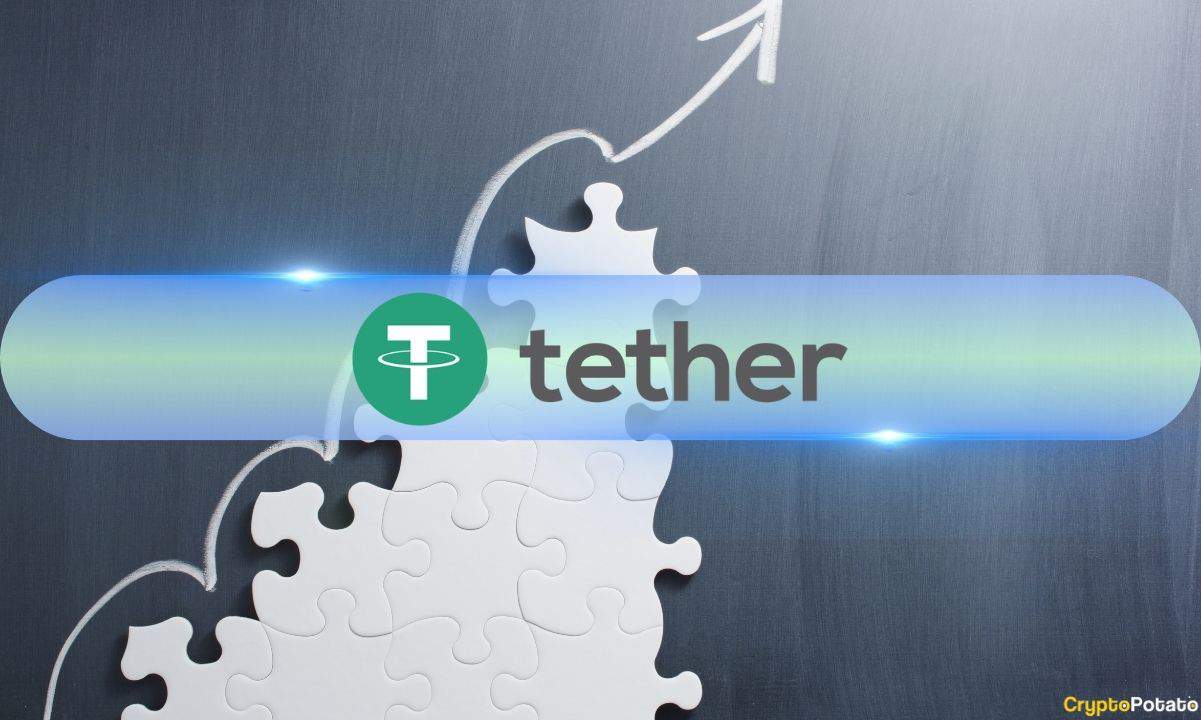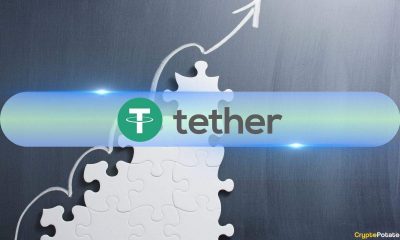Cryptocurrency
Ripple Considers IPO Outside US Amid ‘Hostile’ SEC Environment, Says CEO

Ripple CEO Brad Garlinghouse disclosed to CNBC that the company had been actively exploring markets outside the United States for its much-anticipated initial public offering (IPO).
Garlinghouse attributed this strategic move to what he described as a “hostile” regulatory environment in the U.S. Nevertheless, the company has currently halted any intentions of pursuing an IPO.
Ripple Explores Global IPO Options Amid Regulatory Challenges
The decision to look beyond American borders for an IPO comes as Ripple navigates an ongoing legal battle with the U.S. Securities and Exchange Commission (SEC), a case initiated in 2020 that has yet to reach a resolution.
The CEO had previously expressed intentions to pursue a public listing once the regulatory dispute had concluded. Speaking at the World Economic Forum in Davos, Switzerland, Garlinghouse shed light on Ripple’s decision to look beyond U.S. borders.
He stated that the company had explored jurisdictions with “clear rules of the road” to facilitate a smooth IPO process. The Ripple CEO expressed frustration with the SEC’s stance, emphasizing the challenges faced by companies attempting to go public amid regulatory scrutiny.
He drew attention to the SEC’s lawsuit against Coinbase, a U.S.-based cryptocurrency exchange which, despite the SEC previously approving its S-1 filing, was later sued for alleged violations outlined in its S-1.
“In the United States, trying to go public with a very hostile regulator that’s approved your S-1, that doesn’t sound like a lot of fun to me,” Garlinghouse remarked.
An S-1 is a crucial document filed with the SEC ahead of an IPO, disclosing financial performance and key investment risks.
Garlinghouse Hints at US Listing Reconsideration
Addressing the current SEC chair, Gary Gensler, Garlinghouse criticized him as a “political liability.” He also expressed optimism for a more favorable regulatory environment under a new SEC chief, hinting at a potential reconsideration of a U.S. listing.
He noted, “We’ll evaluate again, as we have new regulators sitting at the United States SEC.” Despite this, he clarified that going public was not an immediate priority for Ripple.
The CEO also shed light on recent financial moves by the company. Garlinghouse emphasized the firm’s focus on shareholder liquidity, confirming a $1 billion stock buyback initiative to provide liquidity to early investors who have been with Ripple for over a decade.
Binance Free $100 (Exclusive): Use this link to register and receive $100 free and 10% off fees on Binance Futures first month (terms).
Cryptocurrency
These Divisions Contributed Significantly to Tether’s Q1 2024 Profit of $4.52B

Earlier this week, the largest stablecoin issuing company, Tether, revealed that it made more than $4.52 billion in net profit in the first quarter of 2024. With the firm having expanded its operations recently, a substantial portion of the profits came from its long-standing businesses and not the newly formed divisions.
Tether revealed in an attestation report that roughly $1 billion of the profit in Q1 2024 came from entities in charge of issuing stablecoins and managing related reserves.
Tether Made $4.52B in Profit Last Quarter
In mid-April, Tether announced that it was expanding its framework beyond stablecoins. The firm unveiled new divisions, including Tether Edu, Tether Power, and Tether Data, which would handle digital skills education, sustainable Bitcoin mining operations, and strategic investments in emerging technologies.
Tether Finance, which has been in existence, will continue spearheading the company’s stablecoin products and financial services. Tether revealed that the $1 billion this division made last quarter came from net operating profits derived mainly from its U.S. Treasury holdings. During the quarter, Tether increased its direct and indirect ownership of U.S. Treasuries via investments through money market funds and overnight reverse-repurchase agreements.
The remainder of Tether Q1 2024 profits came from mark-to-market gains in the company’s Bitcoin and Gold positions. Notably, the firm’s U.S. Treasury holdings are now in excess of $90 billion.
“With the first attestation of 2024, Tether has demonstrated its unwavering commitment to transparency, stability, liquidity, and responsible risk management. As shown in this latest report, Tether continues to shatter records with a new profit benchmark of $4.52 billion, reflecting the company’s sheer financial strength and stability,” Tether CEO Paolo Ardoino said.
For the other divisions, encompassing renewable energy, artificial intelligence, peer-to-peer communications, and Bitcoin mining, Tether made strategic investments totaling $5 billion in Q1 2024.
Additional $12.5B USDT Issued
Interestingly, Tether unveiled its net equity for the first time. The company witnessed a significant spike from the $7.01 billion recorded by the end of Q4 2023 to $11.37 billion as of March 31.
Meanwhile, Tether claims its stablecoin offerings saw a $1 billion increase in excess reserves, bringing the total to approximately $6.3 billion. Tether-issued stablecoins are now backed by cash and cash equivalents at 90%. The company also issued an additional $12.5 billion USDT last quarter.
Binance Free $600 (CryptoPotato Exclusive): Use this link to register a new account and receive $600 exclusive welcome offer on Binance (full details).
LIMITED OFFER 2024 for CryptoPotato readers at Bybit: Use this link to register and open a $500 BTC-USDT position on Bybit Exchange for free!
Cryptocurrency
Ex-FTX Europe Exec Purchases Titanic Gold Watch for $1.5M: Report

A former executive of the European arm of the bankrupt cryptocurrency exchange FTX has bought a gold pocket watch recovered from the Titanic wreck for £1.175 million ($1.5 million), the largest sum ever spent on any piece from the memorable incident.
According to a Wall Street Journal report, German fintech entrepreneur and former head of FTX Europe Patrick Gruhn bought the 14-karat gold watch last Saturday from the English auction house Henry Aldridge & Son, a leading seller of Titanic memorabilia.
Former FTX Exec Buys Titanic Gold Watch
The pocket watch belonged to American property mogul John Jacob Astor IV, who sank with the ship after his pregnant wife, Madeleine Astor, was rescued in a lifeboat. Astor, the richest passenger aboard the Titanic, was returning from a honeymoon in Europe with his wife when tragedy struck in 1912.
Astor’s body was found a week after the Titanic sank by a steam vessel’s crew. The items found on his body included a gold watch, a gold pencil, a diamond ring, a gold buckled belt, and gold cufflinks. Astor’s son, Vincent, kept the watch for a while before giving it to the son of his late father’s secretary, whose family eventually sold it to John Miottel, a private collector, in the 1990s.
Miottel’s collection auctioned the watch last week, and Gruhn bought it for his wife, Maren Gruhn, revealing they would display the item, engraved with Astor’s initials, in U.S. museums.
“We want people in the U.S. to be able to see and admire this historic relic,” said the former FTX executive.
Gruhn further revealed that he felt connected to Astor because their families left Germany for the U.S. in search of wealth.
FTX Dropped Lawsuit Against Gruhn
Gruhn spearheaded FTX’s European arm until the global entity went bankrupt in November 2022. CryptoPotato reported a few months before FTX’s implosion that Gruhn and the disgraced founder Sam Bankman-Fried (SBF) were working towards establishing a regional headquarters for the exchange in Dubai.
Following the exchange’s collapse, the firm’s bankruptcy estate filed a lawsuit against Gruhn and other former executives to recover $323 million SBF spent in acquiring the Swiss company that became FTX Europe on the basis that the founder overpaid. However, the case was dropped in February, with the former executives agreeing to buy back the European assets for roughly $33 million.
Binance Free $600 (CryptoPotato Exclusive): Use this link to register a new account and receive $600 exclusive welcome offer on Binance (full details).
LIMITED OFFER 2024 for CryptoPotato readers at Bybit: Use this link to register and open a $500 BTC-USDT position on Bybit Exchange for free!
Cryptocurrency
a16z Partner Questions Favoritism Towards Meme Coins Over Blockchain Innovation

While meme coins have seen a massive resurgence this year, this has raised concerns for certain industry players.
Chris Dixon – a general partner at Andreessen Horowitz (a16z) – has expressed concern over the US regulatory system, questioning why meme coins were allowed to thrive while cryptocurrency companies and blockchain tokens with useful applications “get stuck in regulatory purgatory” due to potential classification as securities.
Trapped in “Regulatory Purgatory”
While delving into the resurgence of meme coins and the regulatory challenges they present in the crypto industry, Dixon raised concerns about excessive speculation and questioned why the market repeatedly favors them over more productive blockchain innovations.
In his latest article, Dixon described meme coins as tokens primarily used for humor, stemming from online communities’ in-jokes, such as Dogecoin, inspired by the old “doge” meme.
“But my goal here is not to defend or to diminish meme coins. It’s to point out the absurdity of a regulatory regime in the US that lets meme-only tokens thrive – while crypto companies and blockchain tokens with more productive uses face hurdles.
We see this every day while working with entrepreneurs and start-ups. Any meme maker can easily create, launch, and even automatically list tokens. But entrepreneurs trying to build something lasting? They get stuck in regulatory purgatory.”
He went on to highlight the disparity in regulation, where meme-only tokens can easily launch and trade, while entrepreneurs developing lasting projects face regulatory obstacles. Dixon referred to this as “the computer vs. the casino” distinction, with one culture focused on innovation and the other on speculative trading. He argued for better regulation to protect investors and prevent get-rich-quick schemes.
Drawing parallels with the post-Great Depression era, Dixon also stressed the need for regulatory guardrails to boost growth and innovation in the cryptocurrency market while simultaneously advocating for a regulatory framework that acknowledges the different characteristics of various tokens, ensuring fair, efficient, and safe markets for investors.
Meme Coin Explosion and Pitfalls
With the market recovery, 2024 saw a growing adoption trend for meme coins. The market cap of leading meme coins reached $80 billion, nearing the record highs seen in the 2021 rally. However, the total value has currently dropped to almost $50 billion.
While several meme coins such as Dogwifhat (WIF) – which was launched in November 2023, and surpassed a market capitalization of $3 billion – garnered media attention, many others result in rug pulls or immediate market dumps after launch. These stories of massive gains lure novice and inexperienced traders to enter the crypto market.
Binance Free $600 (CryptoPotato Exclusive): Use this link to register a new account and receive $600 exclusive welcome offer on Binance (full details).
LIMITED OFFER 2024 for CryptoPotato readers at Bybit: Use this link to register and open a $500 BTC-USDT position on Bybit Exchange for free!

 Forex2 years ago
Forex2 years agoForex Today: the dollar is gaining strength amid gloomy sentiment at the start of the Fed’s week

 Forex2 years ago
Forex2 years agoHow is the Australian dollar doing today?

 Forex1 year ago
Forex1 year agoUnbiased review of Pocket Option broker

 Forex2 years ago
Forex2 years agoDollar to pound sterling exchange rate today: Pound plummeted to its lowest since 1985

 Cryptocurrency2 years ago
Cryptocurrency2 years agoWhat happened in the crypto market – current events today

 World2 years ago
World2 years agoWhy are modern video games an art form?

 Stock Markets2 years ago
Stock Markets2 years agoMorgan Stanley: bear market rally to continue

 Economy2 years ago
Economy2 years agoCrude oil tankers double in price due to EU anti-Russian sanctions

































